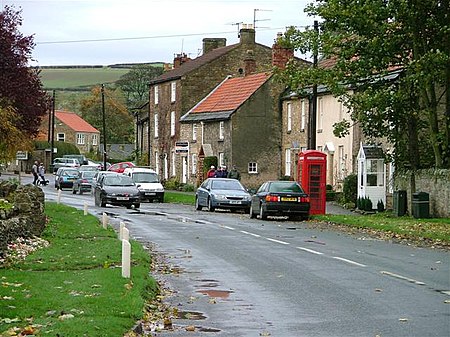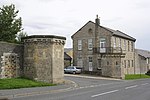Gilling West

Gilling West is a village about 3.5 miles (5.6 km) north of Richmond in the Richmondshire district of North Yorkshire, England. It is located in the civil parish of Gilling with Hartforth and Sedbury. It is named "West" to distinguish it from Gilling East in Ryedale, some 32 miles away. A 2018 report states that the community houses people who commute to Darlington, Teesside and Richmond via the A66 and A1(M). The settlement "retains a village hall, two public houses and a shop but there is no longer a post office. There is a limited bus service to the village." The report adds that Gilling West is a Conservation Area with the High Street of particular significance. "A substantial percentage of the buildings [in the community] are listed as being of special architectural or historic interest".
Excerpt from the Wikipedia article Gilling West (License: CC BY-SA 3.0, Authors, Images).Gilling West
Millgate,
Geographical coordinates (GPS) Address Nearby Places Show on map
Geographical coordinates (GPS)
| Latitude | Longitude |
|---|---|
| N 54.4408 ° | E -1.71913 ° |
Address
Millgate
Millgate
DL10 5JQ , Gilling with Hartforth and Sedbury
England, United Kingdom
Open on Google Maps









